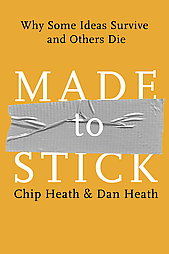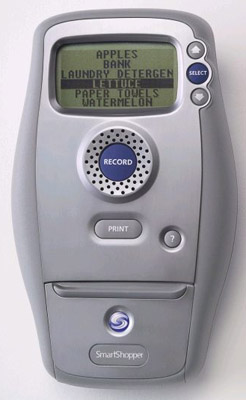The headline in the February 22, 2007 edition of Rolling Stone was ominous: Labels in Free-fall. It certainly looks that way. It reported that total sales of the top five CDs in January, 1997 was 865,144 units. This January sales fell short of that by 67% — only 285,702 units sold. Yes, that’s a free-fall alright. It’s also just the top five albums. Total album sales for the same two months was a drop of much less, 38%. That is, a drop from 55 million CDs sold in January, 1997 to 34 million this January.
So is the sky really falling? Or are these figures simply showing shifts in how people are buying music? The answer, I think, is both. There will definitely be winners and losers. And a lot of the losers are Rolling Stone advertisers.
Let’s look again at the numbers.
First, consider the affect that the long tail phenomenon is having on sales. Although the top five CDs have dropped by two-thirds, the drop was far less severe if you add up all CDs purchased. A drop of 38% is pretty horrific, but it’s a long way from 67%. Why weren’t they closer in magnitude? The answer is exactly what Chris Anderson describes in his book. The masses are buying a greater variety of music, stealing unit sales from the blockbuster CDs. The superstars are far less super than they were in ’97.
The article ignores that fact, because it is too busy bemoaning the imminent death of the album, and consequently, the death of the record label. I don’t argue that both are evolving fast. But dying? It’s all in how you define things.
Now let’s look at the CD. The numbers cited combine online and bricks-and-mortar CD sales. But they are deceptive, because they look at a CD, or “album,” as something that is sold unbroken. Buying individual songs is not included. What’s more, small retailers are also ignored by the source of this data, Nielsen SoundScan. Retailers can only participate if they have “Internet access and a Point Of Sales (POS) Inventory System.” My favorite independent record store has one but not both. What’s more, labels can report sales of their CDs, but must pay $500 per year for the privilege.
Single-artist labels are also disqualified. That means Ani Difranco was off the radar in 1997, when her Righteous Babe Records sold her CDs only (and sold them by the tens of thousands). This year there’s no telling what self-publishing artists are being ignored by Nielsen sales figures. And admittedly they’re the best we’ve got at the moment.
Now let’s look closer at what a record label is good for (here’s a hint to their post-millennium relevance: A record “label” literally is the donut-shaped paper glued to the middle of a vinyl 45 RPM single or a 33 RPM “long-playing record”). There was a time when artists needed a label, both literal and figurative. They needed help producing and distributing their music. Much has changed.
A co-worker, who is a niche recording artist in his spare time, describes a very different time not very long ago. Back then his home recording studio was a room with many expensive pieces of hardware, all wired together. When everything was fired up, the room became an oven. Voltage coursing through the system produced a perceptible signal hum, which itself had to be eliminated during the production process by – you guessed it – another costly gadget. All of this required money and ingenuity. My friend had enough of both to produce his albums, but most artists didn’t back then, and still don’t today.
Luckily, a musician can record and produce albums today with nothing more than the processing power contained in a notebook computer. Buy-in, in terms of both money and intellect, is much lower. As for distribution, deals can be cut directly with sites such as iTunes (are you listening, Freedy Johnston, you neo-Luddite, you?).
My friend is even considering placing a Paypal option on his music site. The site would accept donations, from anyone, regardless of whether they ever buy one of his songs. He tells me that others he knows can make an average of $20 a day, from total strangers, who just like what they’re doing and want to support their art.
It sounds a lot to me like busking. That’s what musicians used to do — and still do today on busy street corners — to earn a living or a little beer money. They strum their guitars, leaving their guitar boxes open for passersby to drop donations into. The kindness and charitable nature of music lovers has always been the lifeblood of musicians. I’m seeing things come full-circle, in an era of improved access to the music that touches our souls.
This was the meta message of Steve Jobs, in his essay last week that seemed to bite the hand that feeds iTunes. The Apple Computing CEO suggested that everyone would sell more music if digital rights management (DRM) was removed from the recordings that he and competing online music stores sell. Removing DRM would be the ultimate honor system. It’s as though he’s proposing to stop charging people a formal admission to hear their favorite artists. Instead, the artists come outside, into the open air, and sing their hearts out for those who toss their coins into a guitar case. Purchases of songs will remain retail transactions, but purchases will be made out of ethics and generosity and not punitive DRM constraints.Â
Representation and distribution were handled by official record labels, and not musicians themselves, out of necessity. Technology required it. This system worked for over 80 years but nothing lasts forever.
Jobs’ anti-DRM essay is a signal that there must be a redefinition of the record label as we know it. Although labels won’t go away, the change will be significant. Instead of the label holding all of the power with most musicians, it will be the musician who can decide which street corner will serve his or her art the best. The label will manage the street corner. That is all. They’ll keep it clean, and maybe help to draw a crowd.
In 2006, Time Magazine called the person of the year “You.” Is it possible that in 2007, Rolling Stone will be forced to crown, as its label of the year, “The Musician?”
 to think twice next time before braying about whatever company publicly stumbles. Outrage over poor customer service is fine, but restraint is also in order. Most reasonable people would agree that jetBlue does not deserve 7,500 voices screaming for blood. People were inconvenienced, not poisoned.
to think twice next time before braying about whatever company publicly stumbles. Outrage over poor customer service is fine, but restraint is also in order. Most reasonable people would agree that jetBlue does not deserve 7,500 voices screaming for blood. People were inconvenienced, not poisoned.
 Voice recognition seems to be a theme in my life lately. I just finished setting up
Voice recognition seems to be a theme in my life lately. I just finished setting up 